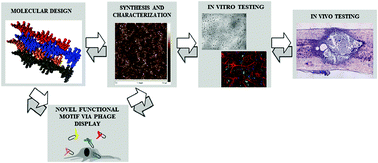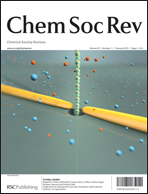Nanomaterials design and tests for neural tissue engineering
Abstract
Nanostructured scaffolds recently showed great promise in tissue engineering: nanomaterials can be tailored at the molecular level and scaffold morphology may more closely resemble features of extracellular matrix components in terms of porosity, framing and biofunctionalities. As a consequence, both biomechanical properties of scaffold microenvironments and biomaterial–protein interactions can be tuned, allowing for improved transplanted cell engraftment and better controlled diffusion of drugs. Easier said than done, a nanotech-based regenerative approach encompasses different fields of know-how, ranging from in silico simulations, nanomaterial synthesis and characterization at the nano-, micro- and mesoscales to random library screening methods (e.g. phage display), in vitro cellular-based experiments and validation in animal models of the target injury. All of these steps of the “assembly line” of nanostructured scaffolds are tightly interconnected both in their standard analysis techniques and in their most recent breakthroughs: indeed their efforts have to jointly provide the deepest possible analyses of the diverse facets of the challenging field of neural tissue engineering. The purpose of this review is therefore to provide a critical overview of the recent advances in and drawbacks and potential of each mentioned field, contributing to the realization of effective nanotech-based therapies for the regeneration of peripheral nerve transections, spinal cord injuries and brain traumatic injuries. Far from being the ultimate overview of such a number of topics, the reader will acknowledge the intrinsic complexity of the goal of nanotech tissue engineering for a conscious approach to the development of a regenerative therapy and, by deciphering the thread connecting all steps of the research, will gain the necessary view of its tremendous potential if each piece of stone is correctly placed to work synergically in this impressive mosaic.


 Please wait while we load your content...
Please wait while we load your content...